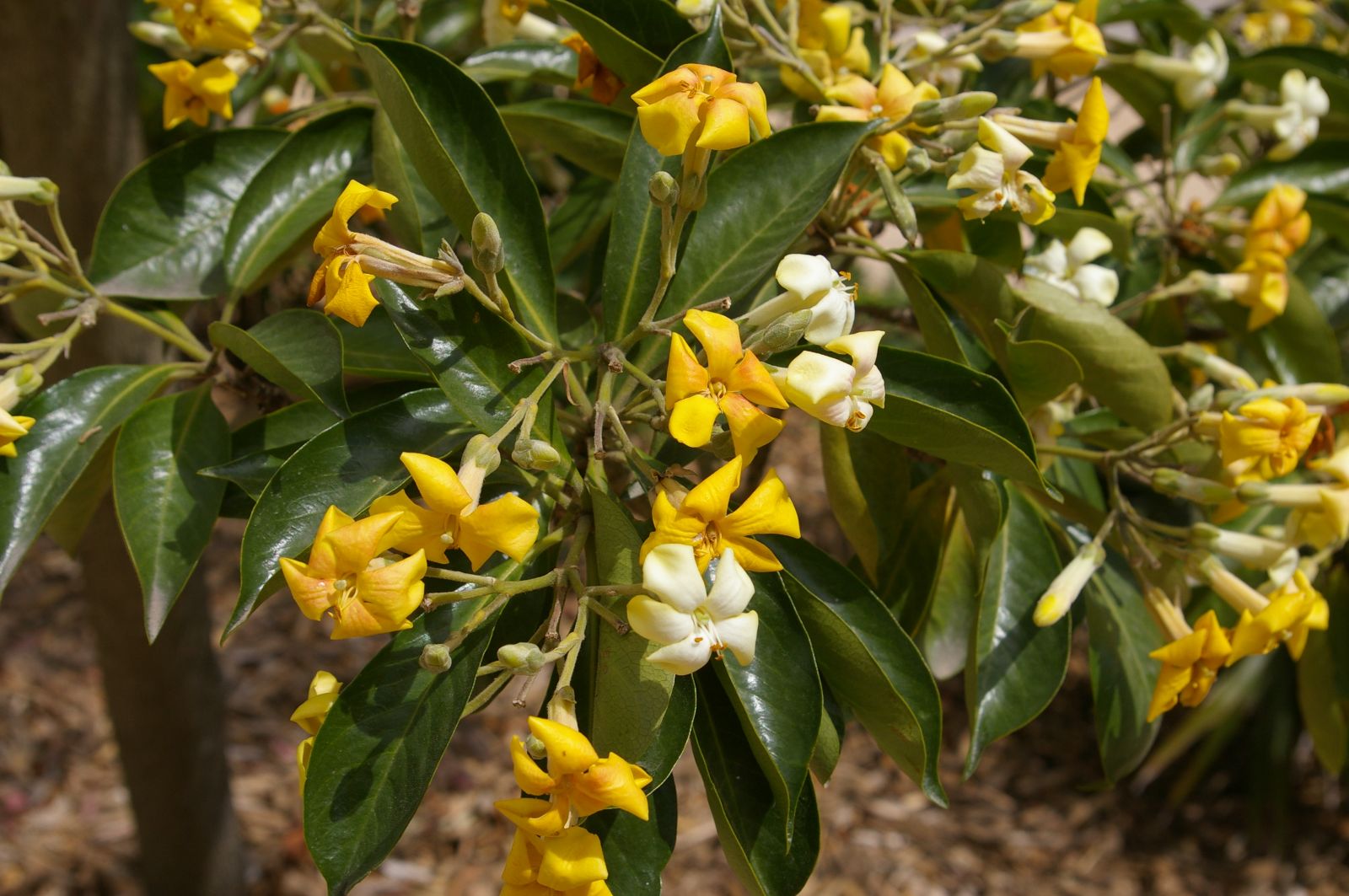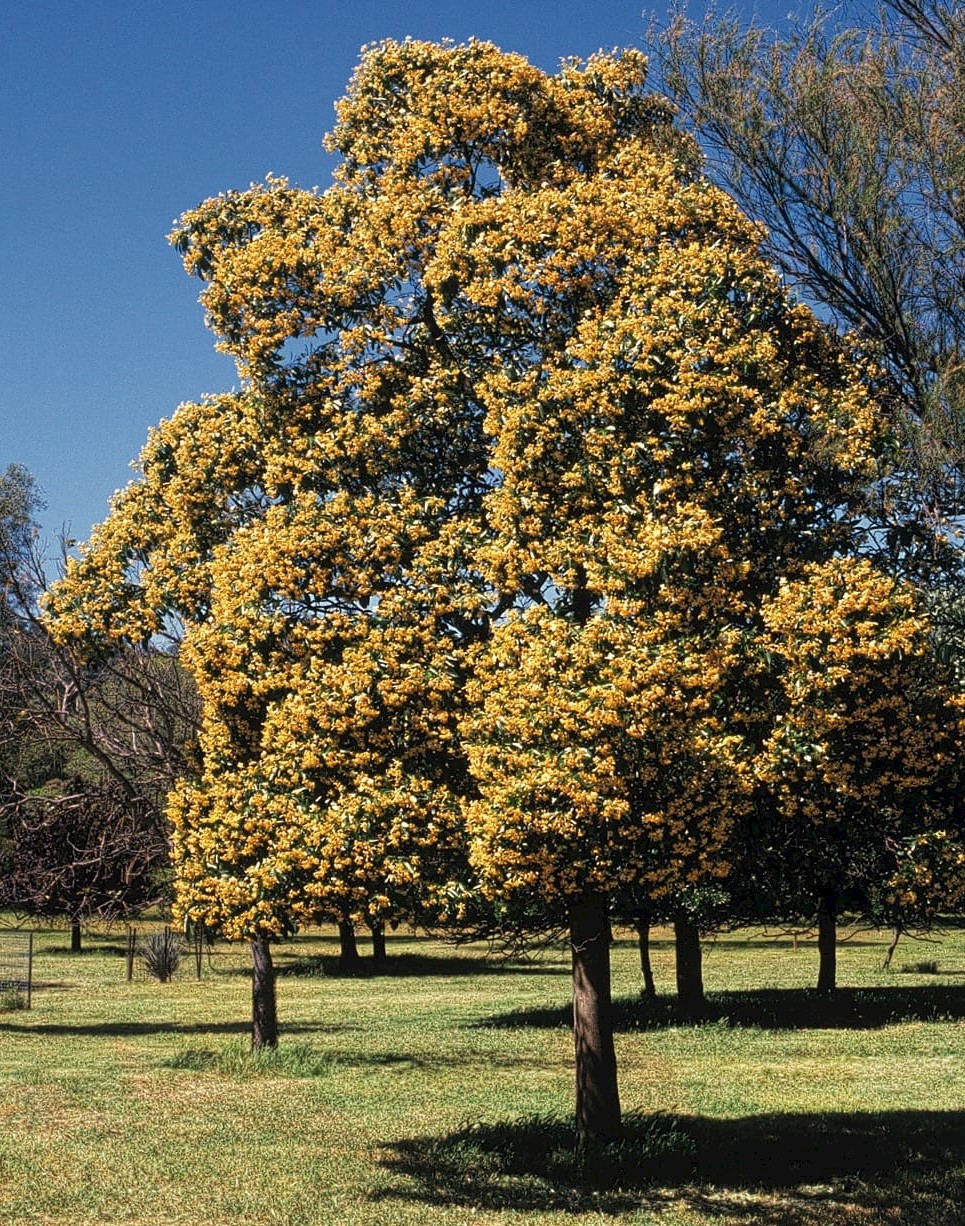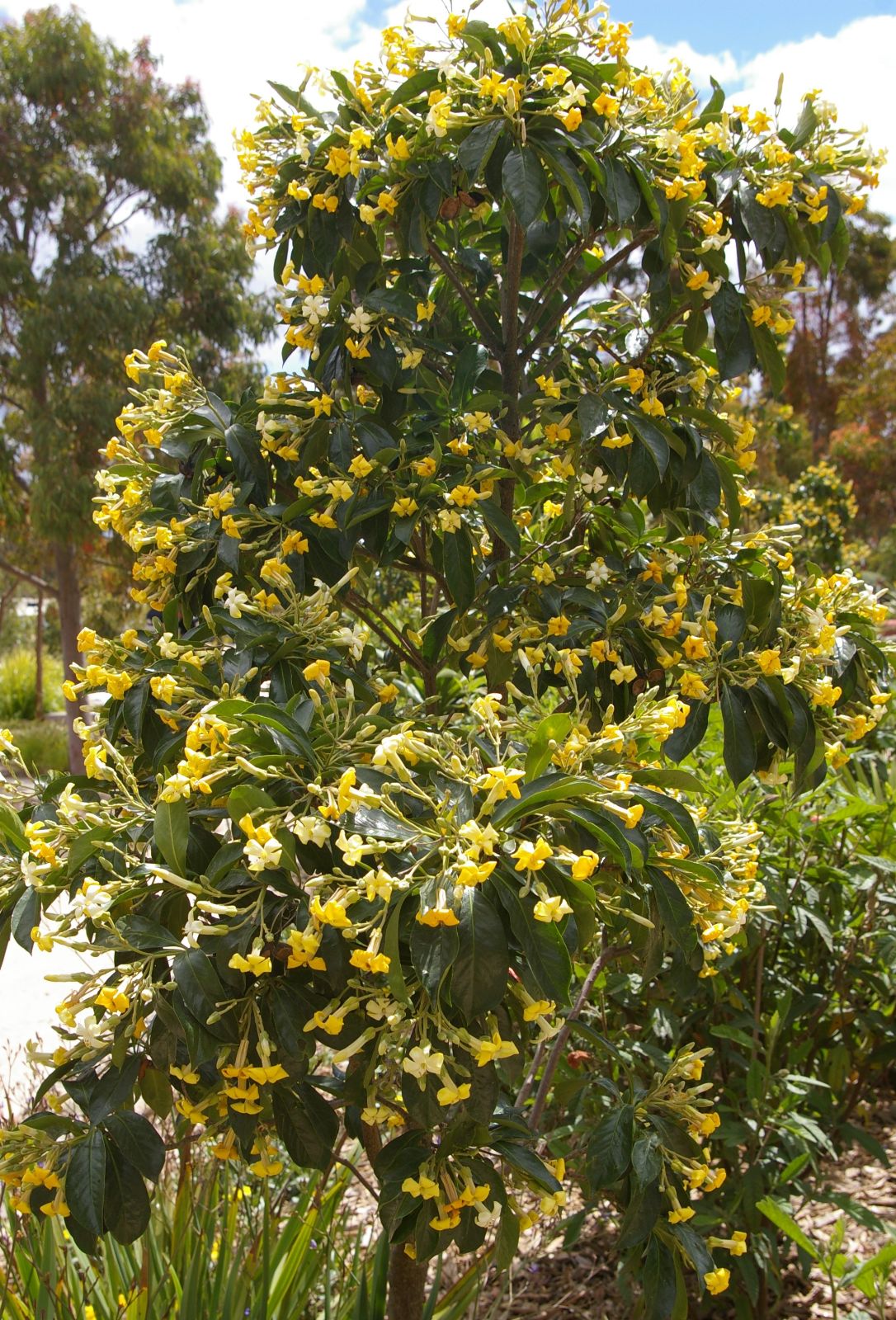Hymenosporum flavum
Credits
Article from New Trees by John Grimshaw & Ross Bayton
Recommended citation
'Hymenosporum flavum' from the website Trees and Shrubs Online (treesandshrubsonline.
Genus
Common Names
- Australian Native Frangipani
- Sweetshade
Other taxa in genus
Shrub or tree 4–20 m, with a narrow, almost columnar crown. Bark smooth and greyish brown. Branchlets initially pubescent. Leaves evergreen, alternate, often clustered at the tips of branches, 6–15 × 2–6 cm, lanceolate, upper surface dark green and glossy, lower surface pale green and pubescent when young, five to seven primary veins on each side of the midrib, margins entire, apex acute; petiole 1–1.5 cm long, merging into the lamina. Inflorescences terminal, umbellate and about 20 cm diameter. Flowers hermaphrodite, strongly fragrant, 4 × 3 cm; calyx five-lobed, eventually disintegrating; corolla composed of a long tube that flares out abruptly into five distinct club-shaped petals, initially pale cream, maturing to yellowish orange or even red. Fruit a brown pear-shaped capsule, ~3 cm long, which splits in two, releasing numerous winged seeds. Flowering September to January, fruiting October to June (Australia). Elliot & Jones 1990. Distribution AUSTRALIA: along the coast southwards from the Cape York Peninsula, Queensland to the Blue Mountains of New South Wales; INDONESIA: Western New Guinea; PAPUA NEW GUINEA. Habitat Rain forest and tall, open forest. USDA Hardiness Zone 9a. Conservation status Not evaluated. Illustration NT392, NT393. Cross-reference K160.
Hymenosporum flavum is a characteristic tree of gardens in southern California, where I (JMG) first saw it at the Los Angeles County Arboretum in 1986 and was captivated by the beauty of the yellow and cream flowers and their lovely rich scent. In southern California and Australia it is popular as a garden and street tree, but further north it does less well. It is cultivated in the San Francisco Bay Area; beyond there, however, it is only happy in mild places along the Oregon coast (S. Hogan, pers. comm. 2007). At Tregrehan it is not successful outside without protection (T. Hudson, pers. comm. 2006), but it does well on Tresco (Johnson 2007). When happy Hymenosporum is fast-growing, preferring good soil with adequate moisture, but can be weedy with self-sown seedlings – and messy, as the sticky fruits attach themselves to feet and carpets (D. Gimbel, pers. comm. 2007). Mature trees can tolerate some frost, but young plants are sensitive and can be severely damaged (Elliot & Jones 1990).








